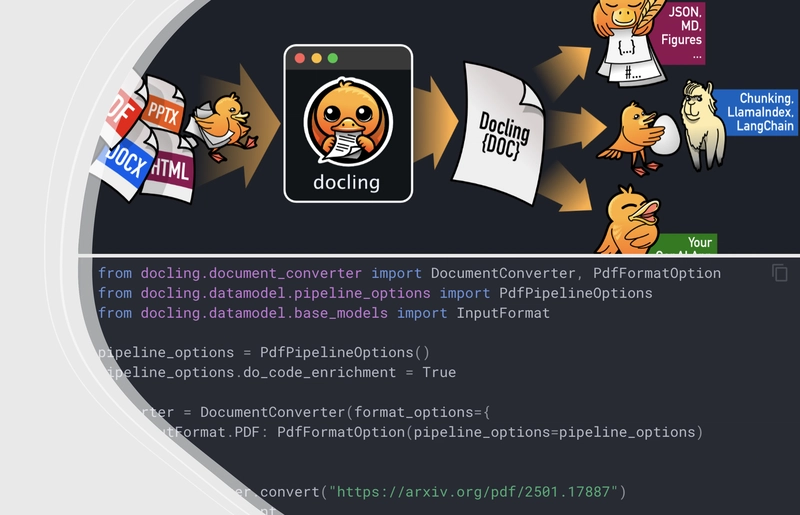Mutate or Replace: What Really Triggers UI Re-Renders in JavaScript Frameworks
Picture this: you've built a beautiful, feature-rich web application that works perfectly during testing. Then users start reporting strange bugs – UI elements not updating, data appearing inconsistently, or worse, your app grinding to a halt when handling larger datasets. What's happening behind the scenes? The culprit might be hiding in one of the most fundamental aspects of your application architecture: how you manage state. The Silent Performance Killer (That Nobody Talks About) As developers, we often focus on algorithmic efficiency, code splitting, and bundle size when optimizing performance. But there's another critical factor that frequently flies under the radar: the difference between mutable and immutable state management and how it affects re-rendering. This invisible battle happens with every state update in your application, potentially triggering hundreds or thousands of unnecessary re-renders that can make the difference between a snappy interface and a sluggish experience. What You'll Learn in This Article I'll take you on a deep dive into the mechanics of state management and re-rendering, exploring: Why frameworks like React and Vue handle state updates completely differently How mutable vs. immutable approaches create distinct rendering behaviors The hidden performance costs (and benefits) of each approach When to strategically choose one pattern over the other Practical optimization techniques for real-world applications Let's start by understanding what happens under the hood when your application's state changes. 1. The Re-Rendering Puzzle: Why Does State Affect Your UI? At its core, modern UI development follows a simple principle: your interface is a function of your state. In mathematical terms, we could express this as: UI = f(State) This simple formula hides a profound truth: any time your state changes, your UI must be recalculated. But how exactly does a framework know when to perform this recalculation? That's where the crucial distinction between mutable and immutable approaches comes into play. The Contract Between State and UI Think of your application as having an invisible contract: when state changes, the UI must be updated to reflect that change. For this contract to work, your framework needs answers to two critical questions: Detection: How do we know when state has changed? Scope: Which parts of the UI need to be updated when a change occurs? Different frameworks answer these questions in fundamentally different ways, creating distinct "pipelines" from state change to UI update. The Mental Model: Blueprints vs. Observations To visualize how state and UI are connected, let's use a concrete metaphor everyone can understand: a building and its blueprint. Immutable State (The Blueprint Approach) Imagine your UI as a building, and your state as its blueprint. When you want to change something about the building: You don't modify the original blueprint - instead, you create an entirely new blueprint with the changes You show both blueprints to the construction team (the framework) The team compares the blueprints to identify differences They rebuild only the parts of the building that need to change based on the comparison The old blueprint is discarded, and the new one becomes the reference for future changes This is how React and similar frameworks operate with immutable updates. They don't track changes within objects - they just compare the old reference to the new one to determine if anything might have changed. Mutable State (The Observer Approach) Now imagine your UI as a building with a sophisticated sensor system: Every room, wall, and fixture has sensors attached to it These sensors are connected to specific parts of your building's structure When you modify a fixture directly, its sensor immediately detects the change The system knows exactly which parts of the building depend on that fixture Only those specific dependent areas are updated This is how Vue, Svelte, and similar frameworks operate with their reactivity systems. They track which properties are accessed during rendering and establish direct connections between specific pieces of state and the UI elements that depend on them. The Key Difference Illustrated Let's see this difference with a simple component that displays a user's information: Immutable Approach (React): function UserProfile({ user }) { return ( {user.name} Age: {user.age} Location: {user.address.city} ); } // Later, when updating: setUser({ ...user, age: user.age + 1 }); // Create new user object Here, React doesn't know which specific property changed - it just knows it received a new user object reference. It will re-render the entire component and then use its reconciliation process to determine what actually needs to be updated in the DOM. Mutable Approach (Vue): {{ user.nam

Picture this: you've built a beautiful, feature-rich web application that works perfectly during testing. Then users start reporting strange bugs – UI elements not updating, data appearing inconsistently, or worse, your app grinding to a halt when handling larger datasets. What's happening behind the scenes?
The culprit might be hiding in one of the most fundamental aspects of your application architecture: how you manage state.
The Silent Performance Killer (That Nobody Talks About)
As developers, we often focus on algorithmic efficiency, code splitting, and bundle size when optimizing performance. But there's another critical factor that frequently flies under the radar: the difference between mutable and immutable state management and how it affects re-rendering.
This invisible battle happens with every state update in your application, potentially triggering hundreds or thousands of unnecessary re-renders that can make the difference between a snappy interface and a sluggish experience.
What You'll Learn in This Article
I'll take you on a deep dive into the mechanics of state management and re-rendering, exploring:
- Why frameworks like React and Vue handle state updates completely differently
- How mutable vs. immutable approaches create distinct rendering behaviors
- The hidden performance costs (and benefits) of each approach
- When to strategically choose one pattern over the other
- Practical optimization techniques for real-world applications
Let's start by understanding what happens under the hood when your application's state changes.
1. The Re-Rendering Puzzle: Why Does State Affect Your UI?
At its core, modern UI development follows a simple principle: your interface is a function of your state. In mathematical terms, we could express this as:
UI = f(State)
This simple formula hides a profound truth: any time your state changes, your UI must be recalculated. But how exactly does a framework know when to perform this recalculation? That's where the crucial distinction between mutable and immutable approaches comes into play.
The Contract Between State and UI
Think of your application as having an invisible contract: when state changes, the UI must be updated to reflect that change. For this contract to work, your framework needs answers to two critical questions:
- Detection: How do we know when state has changed?
- Scope: Which parts of the UI need to be updated when a change occurs?
Different frameworks answer these questions in fundamentally different ways, creating distinct "pipelines" from state change to UI update.
The Mental Model: Blueprints vs. Observations
To visualize how state and UI are connected, let's use a concrete metaphor everyone can understand: a building and its blueprint.
Immutable State (The Blueprint Approach)
Imagine your UI as a building, and your state as its blueprint. When you want to change something about the building:
- You don't modify the original blueprint - instead, you create an entirely new blueprint with the changes
- You show both blueprints to the construction team (the framework)
- The team compares the blueprints to identify differences
- They rebuild only the parts of the building that need to change based on the comparison
- The old blueprint is discarded, and the new one becomes the reference for future changes
This is how React and similar frameworks operate with immutable updates. They don't track changes within objects - they just compare the old reference to the new one to determine if anything might have changed.
Mutable State (The Observer Approach)
Now imagine your UI as a building with a sophisticated sensor system:
- Every room, wall, and fixture has sensors attached to it
- These sensors are connected to specific parts of your building's structure
- When you modify a fixture directly, its sensor immediately detects the change
- The system knows exactly which parts of the building depend on that fixture
- Only those specific dependent areas are updated
This is how Vue, Svelte, and similar frameworks operate with their reactivity systems. They track which properties are accessed during rendering and establish direct connections between specific pieces of state and the UI elements that depend on them.
The Key Difference Illustrated
Let's see this difference with a simple component that displays a user's information:
Immutable Approach (React):
function UserProfile({ user }) {
return (
<div>
<h1>{user.name}h1>
<p>Age: {user.age}p>
<p>Location: {user.address.city}p>
div>
);
}
// Later, when updating:
setUser({ ...user, age: user.age + 1 }); // Create new user object
Here, React doesn't know which specific property changed - it just knows it received a new user object reference. It will re-render the entire component and then use its reconciliation process to determine what actually needs to be updated in the DOM.
Mutable Approach (Vue):
<template>
{{ user.name }}
Age: {{ user.age }}
Location: {{ user.address.city }}
template>
<script>
export default {
data() {
return {
user: { name: 'Alice', age: 30, address: { city: 'Seattle' } }
}
},
methods: {
incrementAge() {
this.user.age++; // Direct mutation
}
}
}
script>
In Vue, the reactivity system tracks which specific properties are used in the template. When user.age is modified directly, Vue knows exactly which part of the template depends on this property and updates only that part of the DOM.
The Fundamental Question
With this understanding, let's examine how we update a simple user object:
let user = { name: "Alice", age: 30 };
Option 1 (Mutable approach):
user.name = "Bob"; // Directly modify the existing object
Option 2 (Immutable approach):
user = { ...user, name: "Bob" }; // Create an entirely new object
The data ends up the same, but the mechanism for detecting change is entirely different.
2. Mutable State: The Direct Modification Approach
What is Mutable State?
Mutable state is the approach where you directly modify existing data structures without creating new copies. It's intuitive because it mirrors how we think about changing things in the real world.
const user = { name: "Alice", settings: { darkMode: false } };
// Direct mutation
user.name = "Bob";
user.settings.darkMode = true;
This pattern feels natural because we're simply reaching in and changing properties of an existing object.
How Frameworks Handle Mutable State Re-Rendering
Frameworks that embrace mutability (like Vue, Svelte, and Angular) employ clever detection mechanisms to track these changes:
// Vue example
const user = ref({ name: "Alice" });
// This mutation is tracked by Vue's reactivity system
user.value.name = "Bob"; // UI automatically updates!
These frameworks use techniques like Proxies, getters/setters, or dirty checking to detect mutations and trigger precise UI updates only where needed. They essentially wrap your objects in monitoring systems that watch for changes.
Vue's reactivity system, for instance, can detect when you modify a deeply nested property and update only the components that depend on that specific data path.
The State-UI Connection in Mutable Systems
The magic of mutable reactivity systems lies in how they create a dependency graph between specific state properties and UI elements:
- During rendering, the system tracks which state properties are used in which components
- When a property changes, the system knows exactly which components depend on that property
- Only affected components are scheduled for re-rendering
Here's a visualization of this process:
State Property A ────┐
│
State Property B ────┼──→ Component X
│
State Property C ────┘
State Property D ────────→ Component Y
State Property E ────┐
├──→ Component Z
State Property F ────┘
When Property B changes, only Component X re-renders. Component Y and Z remain untouched.
Visual Model: The Mutable State Re-Rendering Pipeline
Let's visualize how mutable state updates flow through a reactive system:
-
Your State Object → Wrapped in a reactive container (like Vue's
refor a Proxy) - Property Access → The framework records which components access which properties
-
Direct Mutation → You change a property directly (
user.name = "Bob") - Change Detection → The framework's internal sensors detect which exact property changed
- Dependency Tracking → The framework knows which UI components depend on that property
- Targeted Re-Render → Only the affected components update
Think of it like a smart electrical system where changing one dial only affects the specific lights wired to that dial. The system maintains a detailed wiring diagram of which components depend on which state properties.
The Performance Profile of Mutable State
Mutable state shines in certain scenarios:
- Memory efficiency: You're reusing the same objects rather than creating new ones
- Granular updates: Frameworks can track exactly which properties changed
- Less garbage collection: Fewer objects are created and discarded
However, this approach requires the framework to implement sophisticated change detection, which has its own performance costs.
3. Immutable State: The Replace-Don't-Modify Paradigm
What is Immutable State?
Immutable state follows a different philosophy: never modify existing data. Instead, create a new copy with the desired changes.
const user = { name: "Alice", settings: { darkMode: false } };
// Immutable update
const updatedUser = {
...user,
name: "Bob",
settings: {
...user.settings,
darkMode: true
}
};
This pattern comes from functional programming principles and is embraced by frameworks like React.
How Frameworks Handle Immutable State Re-Rendering
Frameworks built around immutability use a fundamentally different approach to detect changes:
// React example
const [user, setUser] = useState({ name: "Alice" });
// This creates a new object with a new reference
function updateName() {
setUser({ ...user, name: "Bob" }); // React sees new reference, triggers re-render
}
Instead of tracking mutations within objects, these frameworks simply check if the reference to the object has changed (using === comparison). If you provide a new object reference, the framework assumes something has changed and schedules a re-render.
This is why in React, mutating state directly often doesn't trigger re-renders:
// This WON'T work in React
const [user, setUser] = useState({ name: "Alice" });
function brokenUpdate() {
user.name = "Bob"; // Mutation! React won't detect this change
// No re-render happens
}
The State-UI Connection in Immutable Systems
In immutable systems, the connection between state and UI works differently:
- Component receives props/state as inputs
- Component renders based on current values
- When state changes (via a new reference), the entire component is scheduled for re-rendering
-
Optimization techniques (like
React.memo) can prevent re-renders by comparing old and new values
The key difference is that immutable systems don't track which specific properties are used in rendering – they just know that a component uses a particular object. If that object reference changes, the component re-renders.
Here's a visualization of this process:
State Object A ───────→ Component X
(uses A.prop1, A.prop2)
State Object B ───────→ Component Y
(uses B.something)
State Object C ───────→ Component Z
(uses C.data)
When Object A changes (i.e., is replaced with a new reference), Component X re-renders regardless of which specific property within A changed.
Visual Model: The Immutable State Re-Rendering Pipeline
Let's visualize how immutable state updates flow through a system like React:
- Your Initial State → Component receives initial state reference
- Component Rendering → Component renders based on current state
- State Update → You create a new object with modifications
- State Setter Call → You pass this new object to the state setter function
- Reference Check → Framework sees the state reference has changed
- Component Re-Render → The component re-renders with new state
- Reconciliation → The framework determines what actually changed in the DOM
Think of this like replacing an entire control panel instead of adjusting a single dial. The system sees a completely new panel has been installed and must figure out which displays need updating by comparing the new panel to the old one.
The Deeper Connection: Where State and UI Meet
Where the mutable approach creates fine-grained connections between state properties and UI elements, the immutable approach creates coarser connections between entire state objects and components.
This diagram shows the fundamental difference:
Mutable Approach:
State Object
├── Property A ────→ UI Element 1
├── Property B ────→ UI Element 2
└── Property C ────→ UI Element 3
Immutable Approach:
State Object ───────→ Component
├── UI Element 1
├── UI Element 2
└── UI Element 3
In the mutable approach, changing Property A only updates UI Element 1.
In the immutable approach, changing any property potentially updates all UI Elements (without optimizations).
The Performance Profile of Immutable State
Immutable approaches have their own performance characteristics:
- Predictable updates: It's crystal clear when state has changed
- Simplified comparison: Just check if references are different
- Time-travel debugging: Easy to implement undo/redo and track state history
- Pure function friendly: Works beautifully with functional programming patterns
The downside? Creating new objects constantly can increase memory usage and garbage collection overhead.
4. The Performance Showdown: Mutable vs. Immutable
Let's compare how these approaches affect real-world performance:
Memory Efficiency
Mutable state wins here. When you have large data structures or frequent updates, constantly creating new copies (as with immutable patterns) can lead to significant memory churn.
Consider an application managing thousands of records – with mutable approaches, you update specific values in place. With immutable approaches, you potentially create new copies of large arrays or objects with each small change.
Re-Render Precision
Mutable state frameworks typically offer more granular updates. By tracking specific property changes, they can update only the exact DOM elements affected by a change.
Immutable frameworks often need additional optimization techniques (like React.memo, useMemo, or shouldComponentUpdate) to prevent unnecessary re-renders of components when only a small part of a large object changes.
An Interactive Example
To truly understand the difference, let's consider a component that displays user information and allows editing:
Mutable Approach (Vue):
When the user's name is updated:
- Only the specific DOM node containing the name text is updated
- The age and address sections remain untouched
- No component re-rendering occurs - just targeted DOM updates
Immutable Approach (React):
When the user's name is updated:
- The entire UserProfile component re-renders
- React's reconciliation compares the old and new virtual DOM
- Only the name text node is actually updated in the real DOM
- With memoization, child components can avoid re-rendering
The key insight is that immutable approaches often do more work upfront (full component re-renders) but then optimize later (through reconciliation), while mutable approaches do more tracking work initially but can update more precisely.
Developer Experience vs. Performance
This is where the battle gets interesting:
- Mutable state often provides better raw performance but requires more discipline to prevent unexpected side effects
- Immutable state offers cleaner mental models and predictability but may need more optimization work
Consider this comparison table:
| Aspect | Mutable State | Immutable State |
|---|---|---|
| Memory Usage | More efficient | Creates more objects |
| Change Detection | Property tracking | Reference comparison |
| Framework Examples | Vue, Svelte, Angular | React, Redux |
| Update Precision | Fine-grained | Component-level |
| Developer Experience | Simpler syntax | More predictable |
| Debugging | Can be harder to track changes | Easier with time-travel debugging |
| Side Effects | Easier to create accidental side effects | More isolated changes |
5. Strategic Decision: When to Choose Each Approach
Neither approach is universally better – your choice should depend on your specific needs:
When Mutable State Makes Sense
- Working with large datasets where memory performance is critical
- Using frameworks with built-in fine-grained reactivity (Vue, Svelte)
- Needing to update deeply nested properties frequently
- Prioritizing simpler, more intuitive code for your team
When Immutable State Shines
- Building apps where predictable state updates are critical
- Working with unidirectional data flow architectures
- Needing robust debugging and time-travel capabilities
- Using frameworks that expect immutability (React, Redux)
- Implementing undo/redo functionality
6. Real-World Optimization Strategies
Regardless of which approach you choose, here are practical strategies to optimize re-rendering performance:
For Mutable State Systems
- Leverage your framework's reactivity system - Understand exactly how your framework tracks changes
- Structure data properly - Organize state to minimize deep nesting
- Consider immutable patterns for critical updates - Use immutability selectively for important state transitions
For Immutable State Systems
-
Use memoization techniques - Implement
useMemo,useCallback, orReact.memostrategically - Consider specialized immutable libraries - Tools like Immer.js let you write mutable-style code that produces immutable results
- Apply normalization to complex state - Flatten nested data structures to minimize copying
Visual Decision Tree: When to Use Each Technique
Here's a simplified decision tree to help you choose the right approach:
Is performance with large datasets critical? ──Yes──> Consider mutable state
│
No
│
↓
Do you need predictable debugging? ──Yes──> Consider immutable state
│
No
│
↓
Are you using React/Redux? ──Yes──> Use immutable state with optimization
│
No
│
↓
Using Vue/Svelte/Angular? ──Yes──> Leverage built-in reactivity
│
No
│
↓
Choose based on team preference/experience
7. Looking to the Future: The Convergence of Approaches
Interestingly, we're seeing a convergence in modern frameworks and libraries:
- Third-party libraries like Immer (with hooks like
useImmerReducer) allow React developers to write mutable-style code that produces immutable results - Vue has strengthened its immutable state management capabilities
- Libraries like Redux Toolkit now use Immer internally to simplify immutable updates
The future likely holds smarter frameworks that adaptively choose the right approach based on your specific state updates.
Conclusion: Making the Right Choice for Your Application
The difference between mutable and immutable state management isn't just an academic debate – it has real implications for your application's performance and maintainability.
By understanding the mechanics of how state changes trigger re-rendering, you can make informed architectural decisions that balance performance with developer experience.
Remember:
- There's no one-size-fits-all solution
- Consider your framework's strengths
- Profile your specific application's needs
- Be willing to use both approaches where appropriate
What's your experience with mutable vs. immutable state? Have you encountered performance issues tied to state management? Share your thoughts and experiences in the comments below!











































































































































































![[The AI Show Episode 143]: ChatGPT Revenue Surge, New AGI Timelines, Amazon’s AI Agent, Claude for Education, Model Context Protocol & LLMs Pass the Turing Test](https://www.marketingaiinstitute.com/hubfs/ep%20143%20cover.png)





























































































































![From Accountant to Data Engineer with Alyson La [Podcast #168]](https://cdn.hashnode.com/res/hashnode/image/upload/v1744420903260/fae4b593-d653-41eb-b70b-031591aa2f35.png?#)





































































































.png?#)









































































































































![Apple Watch SE 2 On Sale for Just $169.97 [Deal]](https://www.iclarified.com/images/news/96996/96996/96996-640.jpg)

![Apple Posts Full First Episode of 'Your Friends & Neighbors' on YouTube [Video]](https://www.iclarified.com/images/news/96990/96990/96990-640.jpg)


































































































































